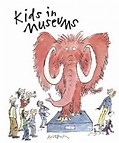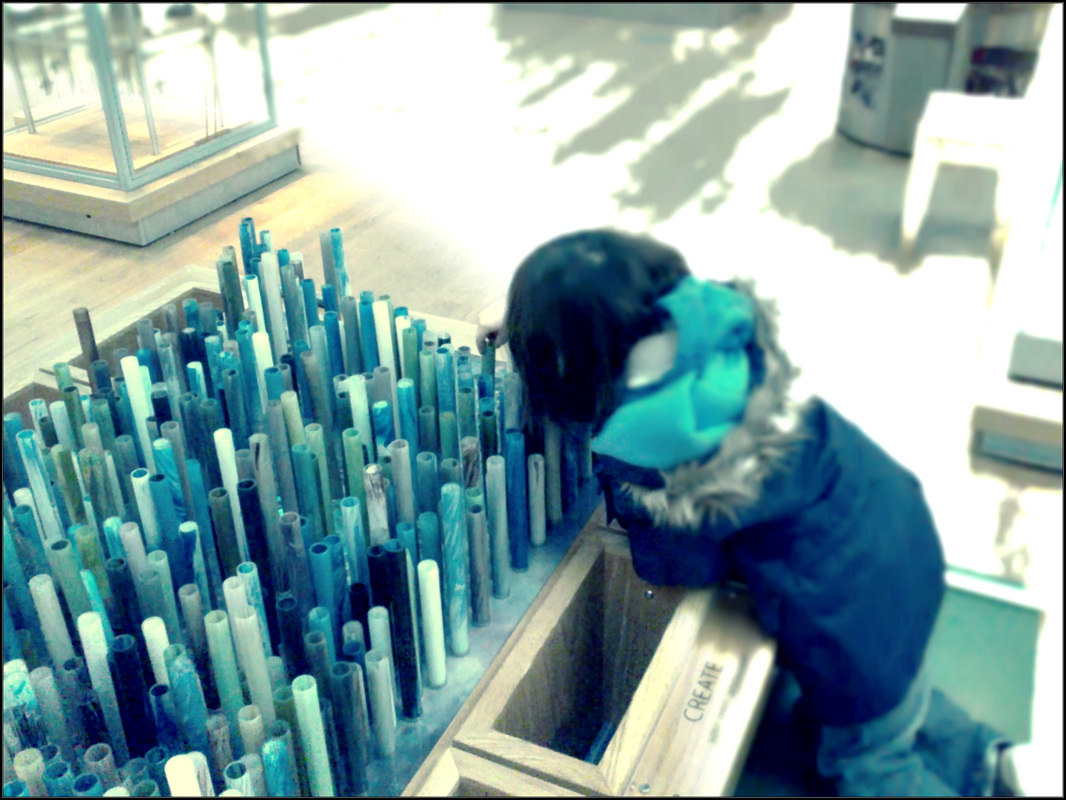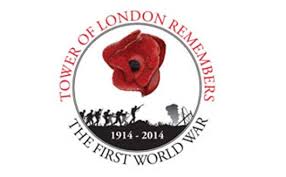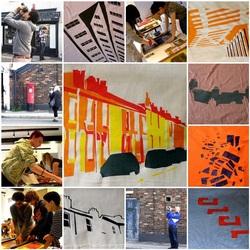|
In summer I researched and wrote a new resource for history and heritage educators on behalf of Curious Minds. Drawing together examples from across the North West, covering an array of indoor and outdoor museum and heritage locations, it explores how schools and heritage organisations have worked together to help young people learn about their local history in cross-curricular ways. It's particularly relevant to the Key Stage 2 curricula but extends to KS1 and KS3 too. Browse or download above, or from my resources page.
Each case study includes - Description of a topic or activity - Objectives and outcomes of the activity - Practical activity suggestions to include in topics / lesson plans - Top tips for planning and practicalities - Links to further resources Includes five example case studies of projects by schools and museum or heritage sites working together cover these overarching themes: - Investigating a heritage site (through the ages and a timeline) - Investigating a local street (in this instance Victorian but transferable to other periods) - Investigating a historical period (Stone, Bronze and Iron ages) - Creative engagement with maths (using the art / design of Blackpool Illuminations to cover the full KS1 & 2 maths curriculum) - Exploring the local town (in this instance a coastal town with a migratory mining history) Current History links - the lives of significant individuals in the past who have contributed to national and international achievements - significant historical events, people and places in their own locality - changes in Britain from the Stone Age to the Iron Age - a study of an aspect or theme in British history that extends pupils’ chronological knowledge beyond 1066 - ideas, political power, industry and empire: Britain, 1745-1901 With a foreward from Prof. Kerri Facer - education innovator and advocate for place-based curricula.
0 Comments
 I'm delighted to be chairing Kids in Museums new workshop 'Welcoming Families with Autism' at the Science Museum on February 9th. It's a day packed with experts from museums and arts organisations who can share their experiences of welcoming families with children or young people on the autism spectrum. You can book for the event here or keep an eye on future workshops here It's a subject I've been interested in for many years and have blogged about previously, though my interest has ramped up several gears over the past 12 months thanks to my involvement with two local autism charities, and my work with Lancashire Museums who commissioned me to research the subject of museums and autism from the perspectives of museums and autistic visitors. You can read more about that on my separate, ongoing blog http://www.museumsandautism.tumblr.com/ which combines museum practice, feedback from families and visitors on the autistic spectrum, and expert reports and presentations on the subject.  The relationship between museums and autism first began to percolate in my mind a few years ago and slowly I've been piecing together more and more learning and thinking. It's been accelerated lately for a number of reasons, each of which has some really useful learning for the museums (and wider cultural) landscape. In no particular order, they are presented below - take whatever learning and inspiration you can from it, and apply it in some way to your own work or thinking. Change is made one step at a time... 1. "If you've met one person with autism, you've met one person with autism" People who have autism each have their own version of it. Many such people share some of the characteristics, but one person's experience of autism could be almost unrecognisable to another. (Great blog post here if you're interested in more on that theme). 2. We're slow on the uptake. Cinemas have been programming autism friendly events for a few years now. Museums can a learn a lot here from their cultural counterparts. You could look up pretty much any cinema and find an autism friendly events listing. Try it. Why should museums be different? It's hard to try and assemble a single approach to becoming more autism friendly precisely because every person with autism has their own individual version of it. Whilst a good starting point is find out what you can, and do what you can with what you have (and read point 3 below), the cinema approach has taken a few core approaches: - lower lighting levels when lights are up [to help people with extra sensitivity to bright light] - lower volume levels [for people with extra sensitivity to sound / reverberations] - trailers are removed from the show [reducing the time needed to be in a different environment or the time needed to focus] - taking own food / drinks is encouraged [special dietary needs are common with autism] - moving round the cinema is fine whilst the film is showing [because sitting still and / or quiet for long periods is a challenge for some people with autism]. Simple adaptations, no cost involved. 3. We have an excellent champion working from the inside out. She won't thank me for cheerleading her work because she's a modest and unassuming sort of person, but over on Twitter you can follow Tincture of Museum, 'Volunteer at Museum of London, Horniman Museum and Bromley Museum; blogger; mum; advocate of autism in museums'. She's a gentle and hugely effective campaigner and writes very insightfully on this subject. Maybe start with this post from her blog. 4. Collectively, the museum profession is onto a good thing. There was a great question about how to successfully, sensitively and appropriately include some particular children with autism and other conditions posted on the Group for Education in Museums email list and some brilliant insight collated and shared back around by Dr Trudie Cole, Learning and Access Manager at Poole Museum Service. You'll find it all in the document at the bottom of this post. What an incredible body of knowledge and experience museum professionals have on this subject - pretty powerful when you put it all together. Likewise, the Science Museum have their Early Birds programme offering more quiet access for children with autism (both in terms of noise and visitor hustle and bustle); Manchester Art Gallery trialled their Open Doors programme for families with children on the autistic spectrum; and the RAF Museum have recently become the UK's first cultural venue to receive The Autism Access Award from the National Autistic Society. More here and here. There are more plans afoot and more conversations being had within the museum sector to push awareness and understanding up a gear. I'm sure this will soon become a big thing for our profession. 5. You can't necessarily spot museum staff (or people in general) with autism, and it's hard to put in an employment policy. This is a strange one that came about when I saw a post on twitter asking if anyone knew of any museums who employed people with autism. It would be unethical and illegal (in the UK at least) for an organisation like a museum to give any personal information out about any of their employees. And then there are further complications which would make it difficult even if technically, they could, but I think it's worth talking about these with the intention of building more understanding about the nature of having and working with autism... On the one hand I think you'd be hard pushed to find a museum of a decent size that didn't employ someone with autism (statistically autism is currently thought to occur in between 1 in 100, and 1 in 80 people in the UK, depending on which reports you read); and many facets of museum work would naturally attract certain skills and characteristics known to be part of the autistic spectrum. On the other, who would know? Autism is invisible. There are a range of associated conditions that can accompany autism which have physical manifestations but autism itself exists and plays out within the brain first and foremost. This leads to complications about identifying employees with autism since a) a person may not know they have it - it may never have occurred to someone that they may have it, and diagnosis levels in adults (particularly women) in the UK are low for various reasons b) a person may have self-diagnosed, but have no professional confirmation - so do they have it or not? c) if they know they have it, they may or may not have chosen to let their employer (or anyone else) know d) even if a museum were to have an actual pro-autism or targeted disability employment policy, see a, b and c above So, if for some reason you're interested in finding people with autism who work in museums, try and find the people, rather than the museums. 6. More here And finally - there is a long list of autism friendly work by museums around the world here (listed by Autism Speaks, though this is not an endorsement of that organisation. If you discover a list hosted elsewhere leave a comment, I would be happy to refer elsewhere instead when possible). ... thanks to Trudie Cole and Claire Madge for their help with putting this blog post together...
Look what my lovely friends at MOSI have done for all you wonderful teachers. Roll up roll up, bring all your finest young imagineers!  There is an exciting opportunity for potters to get involved in a historic landmark project to commemorate the outbreak of WW1. The Tower of London are currently engaged in a major art installation to place 880,000 Ceramic Poppies around the moat of the Tower for November 11th 2014. At Potclays we are proud to be the supplier of materials and equipment to the project and the fact that part of the installation will be made in Stoke makes it that little bit more special. There is the opportunity for about 20 people to take part in paid work to support a WW1 commemorative Art project. This phase of the project commences on Monday 28th July and the duration of the work is up to 3 months and they need people who have some craft skills - for anyone who has done a BA or MA in ceramics or anyone with a craft background. They are looking for ceramic makers and technicians who can work a 9 hour day (with an hour lunch break) at a rate of £10 an hour for making poppies. This rate is negotiable for experienced makers willing to commit for the 3 month period. The working hours are 8am to 5pm. The work will take place on the site of Johnsons Tiles in Stoke who have a great set up and there would be a lot to gain for graduates or practitioners from a 3 month opportunity working there in terms of learning and experience. Fiamma is especially interested in any technicians or experienced craft practitioners in the team to help meet their target of 880,000 poppies. If they can't do the whole 3 months, they’d still like to hear from them. Please contact Fiamma directly about this opportunity. Please contact [email protected] if you are available, leaving a telephone number. I'm just wrapping up some research for a museum. They asked me to collate case studies of good and innovative practice in how comparable venues (which in this case include medium-large scale museums and galleries) use digital technology to support school visits, in workshops, self-directed studies and potentially back in school.
They also wanted to find out about the ways such activity can be evaluated. They absolutely do not want to have form after form handed to teachers and students, and wondered how else really good evaluation might take place. The brief contains phrases like blended learning and e-learning. It's problematic because there are no clear definitions of what those are and where they start and end, And it's a real rabbit hole - an entire and massive area of specialisation and expertise. It's a small piece of work, just skimming the surface to help the museum think in new and different ways about what they might do, and how to monitor its impact well. I've collated 64 pages, over 32,000 words, of case studies of applications, programmes, projects, reviews and industry expertise opinions on contextual issues such as evaluation, future proofing and general good practice in digital learning and engagement. I've visited more websites, read more conference papers, searched more forums than I can count and interviewed some really insightful and inspiring colleagues in the field. Eventually, if the museum in question has no objections, I'll upload the collated set of case studies and expertise here for anyone else who might like it. It will be in a very rough and ready format - just my research notes really, in no particular order. But it may be of some help to someone so watch this space... In the meantime, it seemed much easier to put all 32k+ words into wordle and see what happened. There it is above, that's what the whole shebang amounts to. Interesting at this stage that 'online' is so prominent, given that I wasn't specifically looking at just online options. Interesting too that if 'conversation', 'collaboration' or 'participation' are in there, they certainly don't jump out. I currently have a number of clients who, in some shape or form, are involved in being part of museums who are trying to become better friends with their communities. In order to be able to assist them in this as well as I can, and refresh my own thinking on the topic, I assembled a quick list of everything I ever knew about this sort of work - what to look out for, what to do, what not to do. I then sent a call out to all the lovely and helpful members of the GEM email list to see what insights they had on the same theme. Three months later I've finally collated it all under sub-headings and here it is; a short paper on things to be aware of if you're a museum working with local communities. In fact I'm sure much of it will be transferable to other types of organisations. I would especially like to thank everyone who did respond to the GEM email request, and sent me all sorts of papers, reports, observations, anecdotes and ponderings, particularly those who trusted me enough with what, in some cases, were quite hard lessons for their organisations to learn. I'd very much like the discussion to keep flowing so please do add comments, or include links to other relevant papers, reports etc below... 04.03.11 update... for the few people who let me know they haven't been able to see or save the document below - it's now also available as a straight forward pdf to read or download here or drop me a line via the comments pageand I'll happily email it to you  I have an ongoing obsession with pattern. In the summer I was lucky enough to turn that obsession into a small project by co-ordinating some workshops for people in Macclesfield. (You can read more about that by looking at Macclesfield Silk Museum Heritage Trust here) In the morning, members of the public were taken on a tour of the town, looking at pattern in architecture. Armed with cameras and a professional photographer guide, we encouraged them to seek out the details that usually pass them by. In the afternoon, I brought in artists / designers / printers from one69a to help them turn their photos into screen prints and transfer them onto bags and t-shirts. one69a have just launched their new website and included the workshops as one of their case studies so take a fuller look over there... And by the way - if you like architectural pattern, do take a look at the project with Rosie James at Ordsall Hall in Salford I'm endlessly fascinated by the way any object, let alone a museum collection, can become some personal to people and interpreted so subjectively. We bring to things that which we already know. It's only possible to see and understand the object the way you alone can see and understand it. With that in mind I was fascinated to watch this short film of how some students of Manchester Metropolitan University worked with a collection of random domestic objects from Victorian times. These were items from the Mary Greg Collection at Manchester Art Gallery. I also recommend you visit the blog for this research and interpretation project. You need know nothing about Mary, her collection, the university or the art gallery in advance. Just enjoy what you find at the blog. I suspect it will reel you in just as it has me. Enjoy this short film (made by Asta Films)  The new Museum of Museums in Trafford has opened, quietly, without much fuss. Which is an unusual way to enter the museum world. Its websites say, ”In spring 2010 the Museum of Museums will open to the general public exhibiting the most comprehensive programme of multi-themed collections in the UK.“ and “A breakthrough concept in cultural attractions, The Trafford Centre has brought together a wide range of heritage exhibitions form public museums and private collections to create a stimulating and unique experience“ Since it was on my doorstep and no-one I knew inside or outside the museum world seemed to know anything about it, I went to see it first hand and blog it thoroughly to help satisfy the curiosity bubbling up among my colleagues, contacts, clients and friends. Read the full account on the mini-blog *here* |
Details
...BlogI'm most interested in how the public, your public, whoever that may be, engages with culture and creativity.
And if it nurtures creativity and develops personal, social or professional skills I'm absolutely all ears. Categories
All
Archives
May 2023
|
||||||




 RSS Feed
RSS Feed
